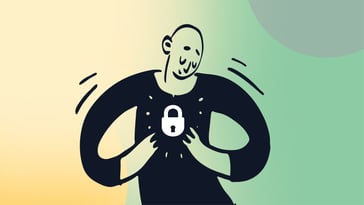Red Hat 7 End of Life (EOL) is approaching. But should we really worry about this? Spoiler alert: there’s no need to panic right away, because when the maintenance support phase ends, the Extended Life Cycle Support begins.
However, this particular moment offers an opportunity to discuss the significance for IT assets managers to identify which software within the company poses risks due to potential lack of maintenance or eventual discontinuation.
In this article, we'll delve into what Red Hat is and the types of products it produces, how the maintenance cycles of these products impact users, and how to leverage InvGate Asset Management to keep software updated on devices within a company.
Let’s dive in!
What is Red Hat 7?
Before defining what Red Hat Enterprise Linux 7 (or RHEL 7) is, it would be wise to review what Red Hat is and its focus (and consequently, whom any changes to its product affect).
Red Hat is a company that specializes in software development and services related to the Linux operating system. So, changes in its products and their various maintenance cycles will affect users utilizing this open-source operating system.
Now, the number 7 corresponds to the version of Linux that Red Hat specifically developed for enterprise environments. This is also known as a Linux distribution. Each of these versions (there are 9 in total) supersedes the previous one and contains new and improved services.
It's worth noting that each version has something known as Life Cycles. This refers to calendars that define the types of maintenance and support that will be provided for each version. RHEL 7 has four: Full Support, Maintenance Support 1, Maintenance Support 2, and Extended Life Phase.
When these four stages reach their conclusion, we arrive at the Red Hat 7 End of Life. But there is nothing to worry about just yet. According to Red Hat's calendar, we are currently approaching the end of Maintenance Support 2.

Why is Red Hat Linux Enterprise being deprecated?
The words Red Hat 7 End of Life may sound ominous to any IT team, but they are not an immediate cause for concern. Understanding the reasons for its deprecation is crucial for contextualizing its importance.
Firstly, it's important to remember the difference between End of Maintenance (EOM) and End of Life (EOL). When a product reaches EOM, its users lose access to critical and important impact security advisories (RHSAs) and urgent priority bug fix advisories (RHBAs). Red Hat 7 will reach End of Maintenance on June 30, 2024.
On the other hand, EOL occurs when a product or service is directly discontinued. This means that organizations will need to migrate their operating system to a newer one if they wish to continue receiving support, updates, and security fixes. Red Hat 7 EOL is set to occur when the Extended Life Cycle Support is finished. This will happen on June 30, 2028.
The reasons why different versions of the software lose maintenance or are discontinued vary. In general terms, they are linked to the deployment of a new version, with greater features, possibilities, and advantages.

What products are affected by Red Hat 7 End of Life?
As we already established, when the fourth and final stage of the RHEL 7 Life Cycle comes to an end, the product will be discontinued. Companies using this version will need to migrate to a new one or switch to a different product. However, this instance will only affect the version 7 of the product. Therefore, those who have already migrated to another version – or product – should not experience significant changes.
It is advisable, however, to stay informed about the calendars and Life Cycles of each version and anticipate any changes this may generate within a company's systems. Versions 8 and 9 also have their schedules stipulated. RHEL 8 End of Life will occur on May 31, 2032. Meanwhile, RHEL 9 End of Life will not occur until May 31, 2035.
What can users do to replace RHEL 7?
There are several alternatives users can consider to prepare for Red Hat 7 End of Life. While there is still time for this to occur, it is important to make all considerations in advance, especially because the step prior to discontinuation involves ending full support for the version, which may have implications in terms of security and privacy. Here's what to consider.
First, keep in mind that there is no immediate need to switch from RHEL 7. In fact, Red Hat announced that the Extended Life Cycle Support (ELS) will keep the version active until mid-2028. However, since this version is nearing the end of its maintenance period, it's possible that it may experience technical glitches and security issues.
The most definitive way to avoid problems in the future would be to upgrade RHEL 7. Upgrading Red Hat Enterprise 7 will offer stability and access to new features and possibilities. Additionally, it is an effective way to defend against security breaches and satisfy compliance requirements with the latest security patches and fixes. Eventually, when Red Hat 7 End of Life arrives, all users will have to upgrade to a new version. So, it is wise to anticipate this instance.
According to Red Hat, users can choose from two different options: an in-place upgrade, which allows you to retain your existing infrastructure environment and configuration settings; and a fresh install, which involves launching a new deployment and manually configuring workloads.
How to detect outdated Red Hat Linux Enterprise devices?

The best way to detect outdated Red Hat 7 devices is to leverage your IT Asset Management solution.
On InvGate Asset Management, you can apply a series of quick filters to identify devices using RHEL and generate a report on their status. Once you have the list of devices to update, you can export that data, and send it to your service desk agents so they can take the proper measures to keep your organization safe.

To sum up
Red Hat 7 End of Life is approaching, providing a good opportunity to remember just how essential it is for IT management teams to know quickly and accurately how many devices are at risk of presenting software and hardware issues.
This is an opportunity not only to assess the operating systems (and software and hardware in general) being used in our respective companies, but also to reflect on the importance of taking full control of our assets.
If you want to try InvGate Asset Management’s capabilities to address software updates, make sure to ask for your 30 day free trial!
Frequently Asked Questions
Is Red Hat 7 still supported?
Yes, it is. Red Hat 7 will be supported until its End of Maintenance, set on June 30, 2024. From that point on, users will lose access to critical and important impact security advisories and urgent priority bug fix advisories.
Is RHEL 7 End of Life in 2024?
No. Red Hat 7 End of Life will occur in 4 years, on June 30, 2028.
Can you upgrade from RHEL 7 to 8?
Yes, users running RHEL 7 can upgrade to RHEL 8.
Can you upgrade from RHEL 7 to 9?
Yes, users running RHEL 7 can upgrade to RHEL 9. Actually, it would be wise to consider upgrading to this version, as it is the newest Linux distribution Red Hat has deployed.















